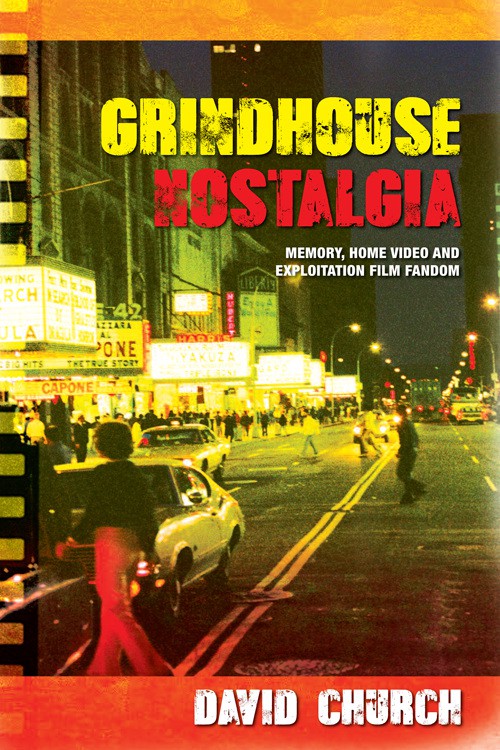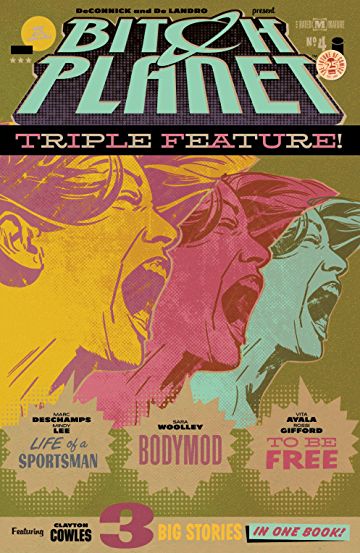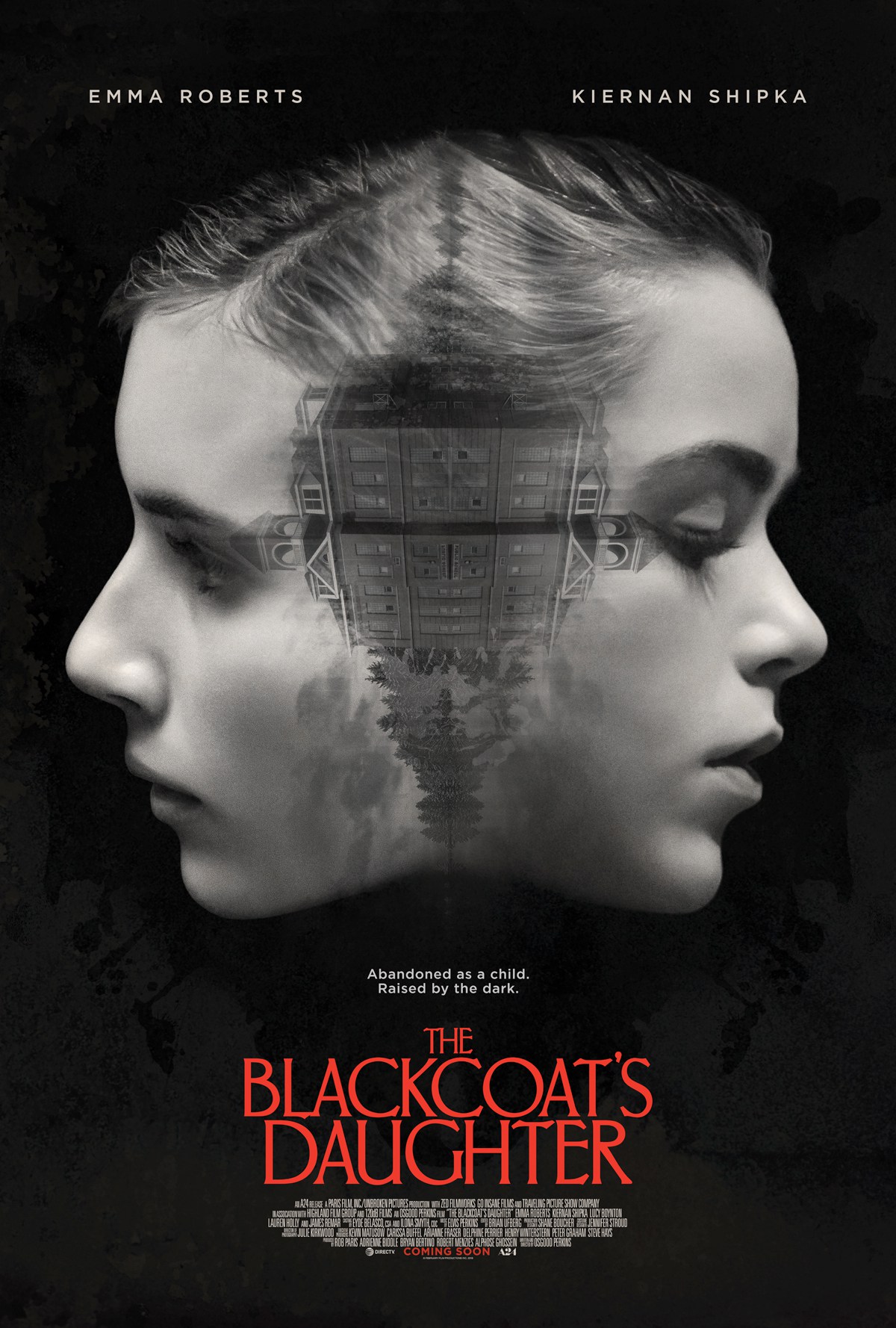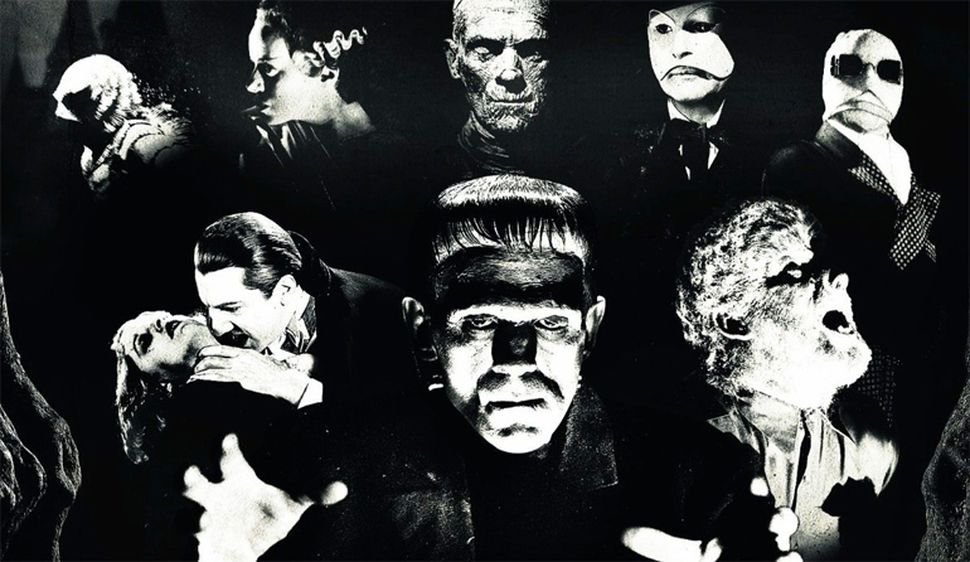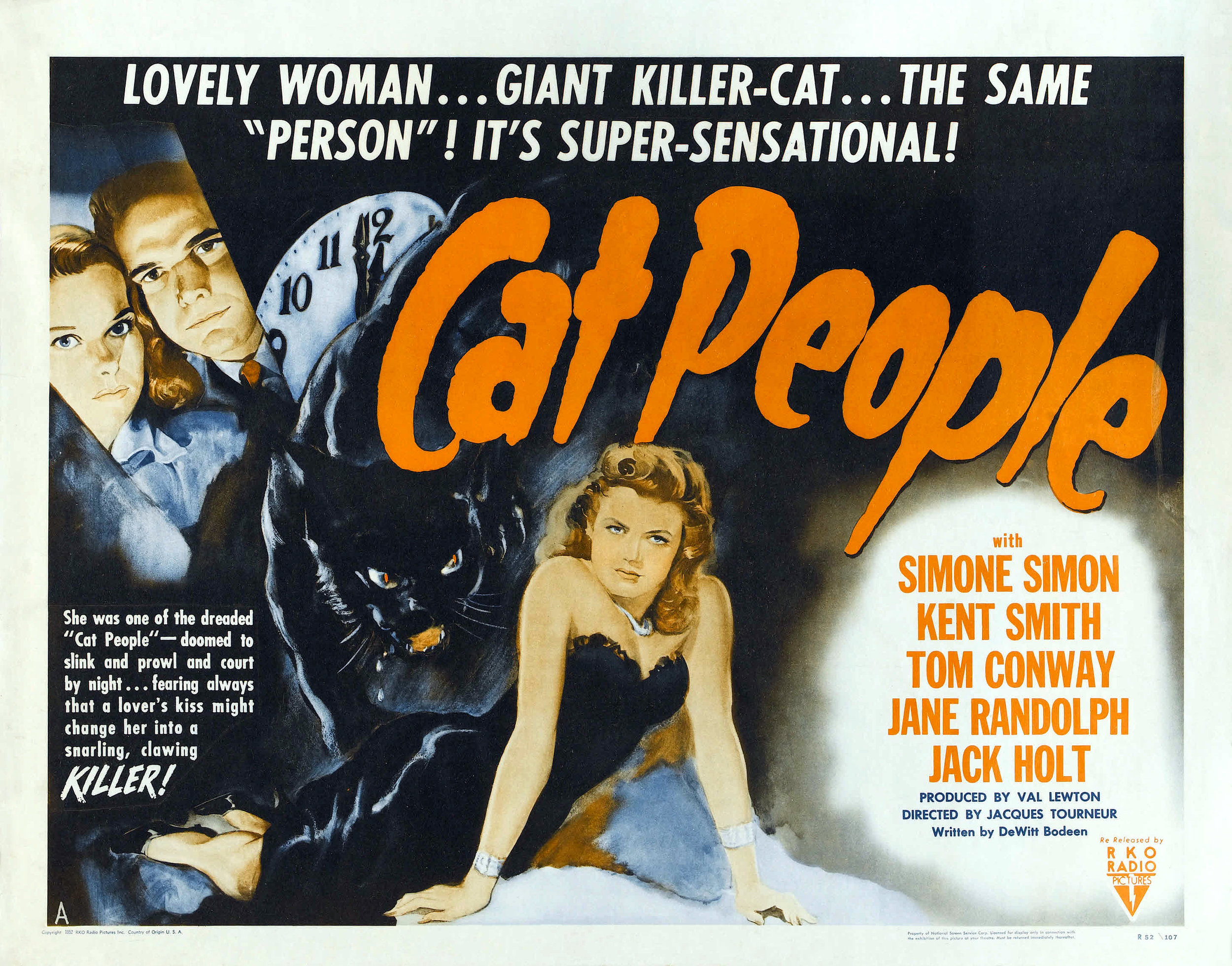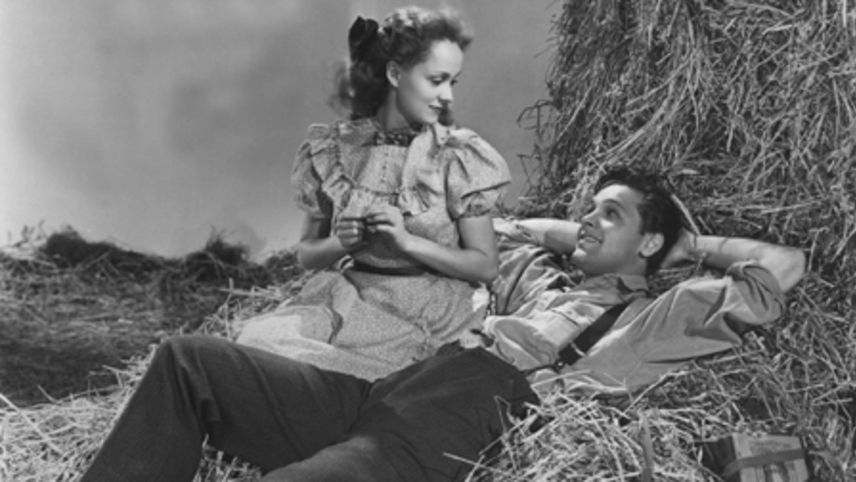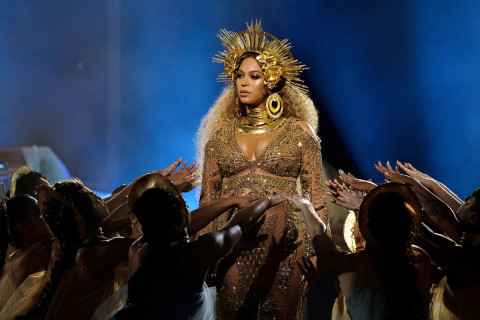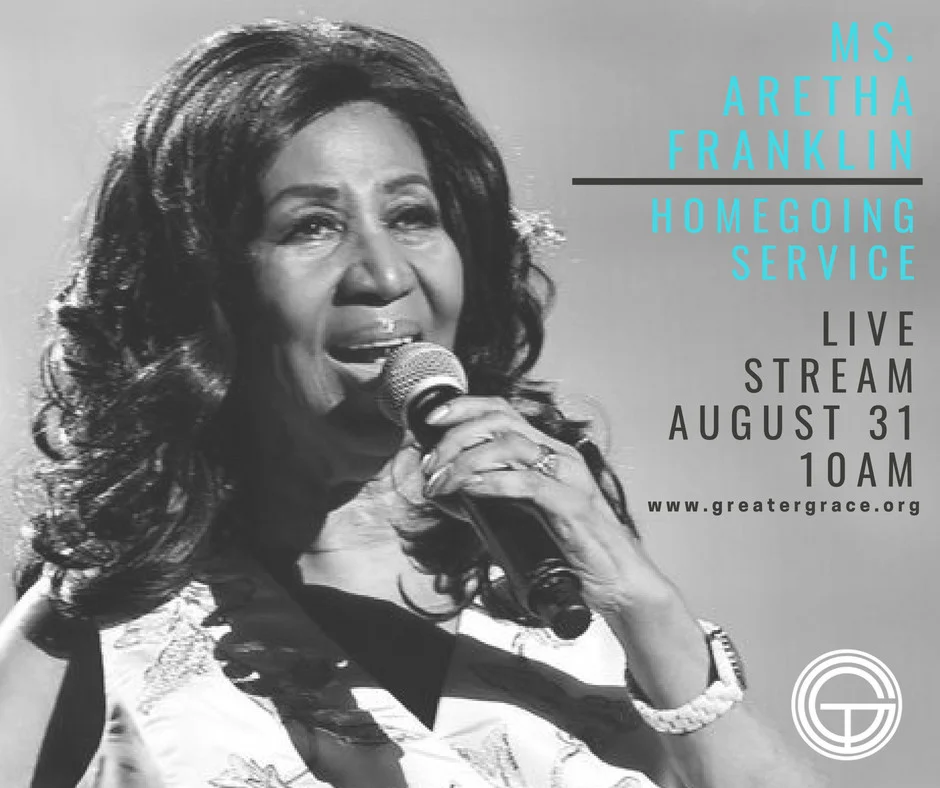Cult Conversations: An Interview with David Church (Part One)
/Interview with David Church (Part One)
In the following interview, published in two-parts, David Church and I discuss exploitation/ grindhouse cinema, the state of fan studies and more besides. David first came to my attention with the publication of Grindhouse Nostalgia: Memory, Home Video and Exploitation Film, a truly insightful and valuable study that Richard Nowell, author of Blood Money: A History of the First Teen Slasher Cycle, “ranks among the most important contributions to a recent upsurge in historical studies of lowbrow Anglophone cinemas” and “destined to become a seminal work in the field.” It was an honour exchanging ideas and issues with David, and I hope readers enjoy this lively, and perhaps contentious, interview as the first part of the ‘Cult Conversations’ series.
In your first book, Grindhouse Nostalgia, you examine the Grindhouse phenomenon that was a key feature of fringe cinema in the 1960s through to the 1980s. How would you explain the characteristics of grindhouse cinema for someone who has little knowledge about the historical context?
“Grindhouse cinema” has really become a synonym for exploitation cinema—that is, low-budget, luridly advertised genre films capitalizing on some sort of timely or controversial subject matter—that linked these films in the popular imagination to what were called “grindhouse theaters.” Grind houses were another name for movie theaters, typically located in downscale inner-city areas with low(er) rents and high foot traffic, which had fallen onto economic hard times and switched to a lower-than-average admission price for continuous shows of double- or triple-feature programs. Although there is a common misconception that the name comes from the “bump-and-grind” style of burlesque dancing, it actually comes from “grind policy,” a trade term referring to the repeating of such programs of films or other popular entertainments (sometimes for up to 22-24 hours per day) for a flat fee that would typically ratchet up over the course of the day, thus stressing quantity of viewers over quality of clientele. Actual grind houses often showed a wide variety of films, including many subsequent-run Hollywood films that were either just about to drop out of circulation or were sold off to independent distributors for revival on the states’ rights market. Meanwhile, the downscale but demographically diverse environs of these theaters gradually created reciprocal associations of disrepute between these cut-rate exhibition spaces, their transient patrons, and the movies that played there. By the 1960s, “grindhouse film” had become a way of describing a low-budget film that seemed destined only for play at such theaters, much as the term “drive-in movie” served a similar purpose—despite the fact that drive-ins also played far more sub-run Hollywood films that is often assumed today.
In the book, I explore the history of both drive-in and grindhouse theaters in relation to their more recent adoption by cult/exploitation movie fans as privileged sites of cultural memory. In particular, I look at how the increased availability of exploitation films during the DVD era and beyond—including in newly restored and remediated forms—has engendered a greater subcultural nostalgia for grindhouse and drive-in theaters as a means of compensating for the fact that the films themselves are no longer difficult to acquire. Moreover, I look at how the idea of the “grindhouse” has become as sort of transmedia concept associated with the surface aesthetic of badly worn celluloid and the abbreviated thrills delivered by trailers, and how this revaluation of physical degradation relates to the symbolic value of the grindhouse theater as an imagined site for not only justifying fans’ more earnest revaluation of culturally denigrated movies but also justifying the mid-2000s production cycle of what I call “retrosploitation” films and media aping the look and feel of antiquated exploitation cinema. If there is a big takeaway for scholars of fandom, it would be an increased attention to the diverse uses of nostalgia and other forms of cultural memory in motivating fan practices, and how the materiality of “old media” opens onto a wider variety of fandoms than are typically figured into fan studies’ predominant emphasis on new media and the rather limited umbrella of texts that tends to be explored under the rubric of “Fandom.”
What facilitated your interest in the topic? Was it based in your own fandom initially? Or was it sparked by academic interest first and foremost?
I always loved watching horror and exploitation movies while growing up, and some of my earliest experiences with them were in remediated forms—such as old VHS tapes and Joe Bob Briggs’s MonsterVision TV show. By the time I was moving from undergraduate to graduate studies, VHS tape trading was quickly becoming a thing of the past, with DVD and online access to such films becoming far more common. I was also very much inspired by the work of Jeffrey Sconce and Joan Hawkins on taste cultures and the potential areas of overlap between very high and very low culture—although I have been rather interested in how some fans approach exploitation films with far more sincerity than a merely ironic or “paracinematic” approach, especially now that easy ironic readings have become such a mainstreamed reading mode (“old” = “bad” = “funny”) among younger folks with little interest to acquire enough historical perspective to appreciate such films on their own terms. So the ways that a sense of historicity—whether in accurate documentation or in the distorted form of nostalgia—becomes encoded into the remediated editions of such films is a topic that my most recent books have engaged.
With Grindhouse Nostalgia in particular, I was most intrigued by how a bygone exhibition context like the “grind house” became such a trendy concept for a few years, brought back into wider cultural circulation by the eponymous 2007 Tarantino/Rodriguez anthology film. I saw it at a packed opening-weekend screening in San Francisco, where the audience was very appreciative and it was a lot of fun—though I constantly wondered what kinds of overlapping reading strategies might be in practice there. A few weeks later, I was at a six-screen drive-in theatre in San Jose, where double features of the latest multiplex films were playing—and while I was watching some disappointingly Hollywood-style remake of a 1970s horror film, I kept being distracted by watching Grindhouse playing on an adjacent screen reflected in my rear-view mirror. There’s probably a good metaphor in there somewhere—but suffice it to say, simultaneously watching a very contemporary Hollywood horror film that doesn’t look like it belongs in a drive-in vs. a film deliberately made to look like a decayed old drive-in movie in this same setting got me thinking about how cultural memories of specific exhibition spaces can so vividly color our experience of different genre films and how we might value them based on our own ability to imaginatively project ourselves into past screening contexts that we never personally lived through. Most of my deepest experiences with fandom actually come from various music subcultures, especially around bands and subgenres three or four decades old, so it’s probably no surprise that the negotiation of pastness and generational tension is something that animates much of my work in this area.
Your concept of ‘retrosploitation’ sounds interesting, especially given the wave of films that seem to ‘borrow’ from so-called low cultural forms, such as grind house and exploitation. You mention Tarantino and Rodriguez’s Grindhouse as perhaps sparking a contemporary cycle or revival of sorts. What other films or media objects do you see as part of this cycle? And why do you believe this is occurring in an era of digital effects and more widely, and cheaply, available production tools? Does it seem odd to you that films that have been viewed historically as ‘cheap and nasty,’ or in other pejorative terms, to become part of mainstream media?
There were some examples of these retrosploitation films, trailers, posters, music videos, TV shows, and other forms of media released before Grindhouse, but that film’s high profile and wide theatrical release definitely accelerated a brief cycle that peaked around 2009-2012 and has since largely abated (though not vanished altogether). Grindhouse itself came at a time when shooting and releasing films on celluloid was about to be supplanted by digital video (DV) technologies in cinematography and exhibition. Rodriguez and Tarantino have admitted that their film was a nostalgic reaction in that regard, as well as the fact that so many exploitation films were being re-released in restored form on DVD and lacked the auratic quality of a decayed film print. One other aspect worth noting, though, is how 1960s-70s exploitation films became so ripe for reinterpretation because they were often made on very low budgets by independent filmmakers, much as the mid-2000s coincided with a new generation of filmmaking with even lower barriers to entry, in the form of YouTube and prosumer-grade DV. Retrosploitation films seemed ideal for recapturing a similar spirit of scrappy, rough-edged DIY production through more contemporary means—but in more of a tongue-in-cheek tone.
Of course, some creators did more with this than others. It became quite easy to see which ones were simply the Tarantino fanboys jumping on the bandwagon, using a digitally created veneer of aged celluloid as an excuse for lazy shock value or a cover for subpar creative skills. The connotations of 1970s grindhouse films as “cheap” and “schlocky” can be revived here to condescendingly internalize a self-parodic acknowledgment that these retro-styled films and other media are just a bit of mindless fun or not worthy of being treated with the respect of other media. Indeed, many examples of retrosploitation media work far better as paratexts (e.g., trailers, posters, etc.) than as feature-length films in their own right—which could also be said of many period-era exploitation films as well. But some of the most interesting examples of retrosploitation media actually do more with the concept by putting different temporalities into dialogue via pastiche. Whereas some creators simply used the nostalgic aesthetic as an excuse for contemporary viewers to wallow in “nasty,” politically unreconstructed attitudes, more thoughtful creators set up a productive friction between political past and present by asking us to imagine ourselves as viewers occupying two historical periods at once—and therefore able to assess what has or has not socially changed between the 1960s-70s and today. It’s this ability for different nostalgias to overlap and conflict with one another within the same text (and not merely be used to privilege a more conservative past) that makes nostalgia, as an affectively charged mode of historically informed imagination, such an important thread stretching across most of my recent books and articles.
Can you add a little to the above about what media objects you have noticed coming in the retrosploitation cycle? I’m sure readers would love to hear more! Also, if the cycle has fizzed out, how would you explain Blood Drive? And what about films such as Machete etc. coming as they do out of the Grindhouse project of Rodriguez and Tarantino? Eli Roth’s The Green Inferno (2013)? Hasn’t the exploitation aesthetic become part and parcel of mainstream culture? Or do you see new directors and creators that were inspired by exploitation cinema carrying the torch for a gentrification of grindhouse at least?
Some of these later entries in the cycle were either held up in distribution limbo (e.g., The Green Inferno [released in 2015]) or didn’t last very long (the one-season TV series Blood Drive [2017]), which demonstrates how the gimmick of a retro-styled aesthetic had largely played itself out by then and had to evolve into something else. A film like The Green Inferno, for instance, seems like little more than Roth’s cynical attempt to “troll the libs” by depicting some college-age do-gooder types getting eaten by the same ‘Scary Brown People’ they go to save from Amazonian deforestation (compare this to a film like Get Out [2017], which calls out white liberalism far more insightfully). But the film’s xenophobic politics, consistent as they are with many of Roth’s other films, were honestly less offensive to me than the film’s sheer laziness in its attempts to outrage. I can more easily forgive a film with ideologically reprehensible content if it’s at least doing something interesting or innovative on another level, but The Green Inferno didn’t even have the courage to try to “out-gore” its Italian referents, so to me it just fell flat as an over-hyped and empty provocation.
On the political flip side, Rodriguez’s Machete films (2010, 2013) were fun in their blaxploitation-style glorification of Mexican-American culture, but I also felt they became too cartoonish and lost a lot of their edge when stretched out to feature length (a good example of how I prefer the original Machete trailer to the fully realized film). Among the more interesting later examples in the cycle, the comic book Bitch Planet (2014-17) is a smart reworking of the 1970s-80s women-in-prison exploitation cycle into a feminist sci-fi parable (somewhat akin to Stephanie Rothman’s 1973 film Terminal Island)—although a far more mainstream show like Orange is the New Black (2013- ) certainly has some influence from the same type of exploitation films. I’d also point to low-budget films like Spring Breakers (2012) or The Purge franchise (2013- ) as great examples of the exploitation tradition—including their capacity to incorporate politically subversive messages about into sensationalistic genre material with mainstream crossover appeal—carrying on beyond where the retrosploitation gimmick ran out of gas as an idea that gentrified and genrified the idea of the “grind house” into a retro aesthetic choice that vastly oversimplifies how fascinating those historical exhibition sites actually were.
Q: Do you see your most recent book, Disposable Passions: Vintage Pornography and the Material Legacies of Adult Cinema, as continuing the work you began in Grindhouse Nostalgia? What did you discover about vintage pornography through your research? And why do you think this kind of retroactive history is valuable for the academy?
Porn fandom is a good example of a major media industry whose fans behave very much like other media fans in many regards, but whose objects of fandom fall quite far outside the purview of “Fandom” as reinforced by the field of fan studies. (Compare, for instance, San Diego Comic-Con and the AVN Adult Entertainment Expo in Las Vegas as the premier annual promotional venues for their respective products, fostering very similar dynamics between fan-attendees and producers/personnel.) At the same time, though, many of the exploitation and “grindhouse” movie fans explored in my previous book will readily admit (softcore) sexploitation films to their retrospectively constructed canon but arbitrarily cordon off hardcore adult films as outside the bounds of their fandom, despite the fact that hardcore pornography made up the bulk of grindhouse programming by the late 1970s and early 1980s. Whereas Grindhouse Nostalgia focuses in large part on the class and gender inequalities that fans reinforce through their selective remembrance of drive-ins, grind houses, and the films that supposedly played at them, Disposable Passions looks at how other fans have taken the reins in sincerely reappraising adult films that have otherwise been neglected by most formal archives and film preservationists. Here we have an entire genre whose history runs parallel to the history of cinema itself, and whose historical diversity indexes an important variety of changing attitudes about sexuality—but which has been very poorly preserved on both aesthetic and political grounds. What this book does is track the history of pornographic cinema through the various archive-dependent figures (including fans, historians, archivists, preservationists, and entrepreneurs) whose desires animate which material traces are left behind and on what terms they are revalued.
Overall, the book focuses on how the history of pornographic cinema has been funnelled into the catch-all category of “vintage” porn, which treats historicity itself as a source of eroticism. The project came partly out of questions of what it means to eroticize a sense of pastness (much as the pastness of celluloid decay was crucial to the retrospective construction of “grindhouse-ness”) and how even academic scholarship is not immune to the erotics of the archive as ephemeral texts come into and out of visibility like a sort of archival “striptease.” Much of my research was conducted at the Kinsey Institute, where I also discovered a 35mm print of a long-lost sexploitation film (The Orgy at Lil’s Place [1963]) that has since been preserved and released on Blu-ray, so much of the book asks how historiography and affect intersect with each other over which films and filmmakers get written into history or forgotten to time. Whereas Grindhouse Nostalgia explores how home video formats reframe bygone exhibition contexts, Disposable Passions explores how the ethical issues raised by the sometimes-problematic sexual attitudes within adult films affects the ethics of film preservation performed by different generations of home video distributors. The fact that there is such a broad swath of film history yet to be written—and the labor of multiple generations of sex workers yet to be fully valued—is all the more reason to pick up the baton from adult film fans and begin filling in these gaps.
In your essay on horror films between 1991-2006 for Offscreen, you touch upon “the minor development in horror during the 1990s,” that is, the so-called ‘race horror films,’ such as Candyman, The People Under the Stairs, Tales from the Hood and Bones, “which each took racial inequality as their basis, often using African-American characters as protagonists, and some directly targeted (however exploitatively, recalling the blaxploitation horror films of the 1970s) to African-American youth audiences through links to rap culture.” Do you think that the recent Oscar and box office success of Jordan Peele’s Get Out can be linked retroactively to that minor development? What are your thoughts regarding race, cult media and the horror genre in the contemporary moment? And what of scholars working in cogent fields? Is it predominantly white men? Or is there a broader spread of gender and ethnicities studying cult media and horror cinema in the academy?
In retrospect, I think some of those 1990s “race horror” films were unduly written off by a lot of critics and scholars because the films seemed too closely aligned with the supposed excesses of the hip-hop subculture, whereas other films like Candyman seemed more accessible because they still had white protagonists and didn’t rely so much subcultural tastes for their appeal. Although an all-around better film, I also suspect Get Out will stand the test of time because it seems more resonant with the renewed activism of the Black Lives Matter era. Of course, one thing that makes Get Out so interesting is the question of who the film is really made for—and whether the bourgeois white critics, scholars, and viewers who so effusively praise the film’s satire are also implicated in Peele’s critique of white liberal complicity with systemic racism. Since the film is so clearly framed to present its Black male director/protagonist’s perspective on the horrors of being Black in America, it seems to at least have that much in common with the “hood” films, but is more attuned to the spatial politics of how race operates beyond non-white enclaves. When you compare the upcoming Peele-produced Lovecraft Country HBO series with the recent uproar among Lovecraft apologists over the bust given out at the World Fantasy Awards, it’s a good moment for reassessing what’s so horrific about the deeper roots of racism.
Women and queer-identified people continue to make up a sizable demographic of horror and adult film scholars, but I think white scholars still tend to predominate the ranks—though that might be more broadly reflective of academia in general. When it comes to the more nebulous realm of cult film scholarship, Anglo-American scholars are perhaps more likely to exoticize as “cult” certain films that scholars from other ethnic backgrounds might be better able to contextualize as part of their own national-cultural tradition—but I also don’t want to make too broad of an overgeneralization here.
What are your thoughts on exploitation cinema as ‘trash,’ or, to use Jeffrey Sconce’s label, ‘paracinema’ as a way to describe ‘lurid’ and ‘distasteful’ films that lie outside the mainstream? It seems as if the current panoply of lavish blu-ray releases of cult objects—with all their extra features activating the cult fan as connoisseur, as various scholars have argued (Chuck Tryon, Mark Bernard, Janet Staiger)—work paratextually to imbue cult cinema with an auratic prestige of authenticity, and so forth. Does this discursively function as a gentrification of trash/ exploitation/ cult as a mode of championing paracinema—thus picking it from the gutters and transforming texts into an art/ pop dialectic? Cult fans seem to buy into the notion of ‘trash’ as a signifier of sub-cultural capital, but I wonder what your thoughts are about the label ‘trash’ per se. I recently equated Mario Bava’s Blood and Black Lace (1964) with Alfred Hitchcock work, to rumbles of mirth amongst academics.
I don’t care for the label “trash,” because even when used to ironically celebrate low-budget exploitation films, it still has that a priori value judgment built in. Too many scholars have neglected Sconce’s all-important caveat that “paracinema” names less a body of films than a specific reading strategy that’s all about the ironic inversion of taste categories to elevate “bad” films that are readable as inadvertently avant-garde. And although it didn’t originate there, the paracinematic reading strategy flourished during the pre-internet, pre-DVD/Blu-ray era of VHS bootlegs whose lo-fi, fifth-generation qualities merely heightened the supposed “trashiness” of such cultural detritus. To go back to a generic example mentioned earlier, that’s certainly been true of 1970s-era adult films, which were very seldom re-transferred to formats beyond VHS and often existed in poorly transferred and re-edited forms—at least until a recently emerged generation of video labels like Vinegar Syndrome has come on the scene to respectfully restore such films in as pristine condition as possible and provide well-researched paratexts to place these films within their proper historical context. Adult films are especially interesting in that regard because, although it’s readily possible to laugh at the awkward set-ups and dated mise-en-scene of a very “Seventies” porno, the fact that said film’s continuing ability to arouse can cut through the mirth and still strike the present-day viewer on a visceral level, very much as originally intended, requires a far more circumspect, less historically chauvinistic approach.
As I’ve mentioned in Grindhouse Nostalgia, many scholars without much investment in taking exploitation films seriously have over-used Sconce’s “paracinema” appellation as a convenient shorthand that allows them to reductively label an object and then move on—not unlike the dismissive attitude of many undergraduate students who see unintentional “humor” in classical Hollywood films because they seem dated, but who then don’t move past those apparent deficiencies to take the films on their own terms. After all, not all low-budget genre films are uniformly and objectively “bad” in their execution, so an ironic reading strategy is simply one possible mode of reception—but a bit of an analytical dead-end for scholars who want to do more than enjoy some campy derision. I don’t know how many times I’ve heard complaints from friends who attended rare repertory screenings of films by Bava and the like, only to have the experience spoiled by the hipster contingent cackling throughout in ironic default mode. That said, “paracinema” itself is not going anywhere, as evinced by Tommy Wiseau’s cult reputation, video blogs like Everything is Terrible, or the recent revival of Mystery Science Theater 3000—but in an era when even the most obscure films can be easily accessed on DVD or Blu-ray editions, ironic laughter/celebration seems like an increasingly empty gesture. Still, if we could place a ten-year moratorium on Hitchcock scholarship and instead devote that time to earnestly investigating underappreciated films like Italian gialli, I certainly wouldn’t complain!
The term ‘exploitation’ seems to be quite tricky to explain. On the one hand, it seems to signify low-budget B-movie products, often with lurid or ‘distasteful’ subject matter; and, on the other, the term has been described as the way in which exploitation cinema ‘exploits’ successful cycles of mainstream fare. For example, Spielberg’s Jaws (1975) inaugurated a cycle of so-called ‘sharksploitation’ or ‘aquatic horror’ titles, such as Orca (1978) Joe Dante’s Piranha (1978). Then again, more recent titles seem to demonstrate that it’s less an exploitation cycle than perhaps a genre, with the Sharknado franchise (2010—); 47 Metres Down (2017); Mega Shark vs. Crocosaurus (2010), and The Meg (2018). The term also seems to connote ‘trash,’ and carries the weight of value judgement within its label, as you mentioned above. Scholars often conflate B-movie, low-budget, micro-budget, cult, grindhouse and exploitation as interchangeable concepts, which certainly problematizes their usefulness as analytic categories. How might you describe what ‘exploitation’ means to students, scholars etc. who are approaching the topic for the first time?
Following Eric Schaefer, I tend to think of “exploitation” as more as of a mode than a discrete genre, since that can include production concerns (low budgets; independent producers; lack of stars), exhibition/distribution patterns (grind houses; drive-ins; independent distributors; four-walling), textual qualities (lurid, timely, or sensationalistic subject matter; cyclical imitation of other films), and so on. Perhaps more importantly, the term itself comes from the mainstream Hollywood studio practice of creating stunts, gimmicks, and tie-ins with local businesses to help “exploit” the latest major-studio film that was coming to your town in the era before day-and-date wide releases. The majors often had advertising people working in in-house exploitation departments, and trade publications like Film Daily would publish exploitation tips for theater owners wanting to make fun enticements tied to a specific film. But “exploitation film” became more of a dismissive label in the trade press for a non-studio film that, because lacking decent production values, big stars, or subject matter with a built-in audience, seemed to rely on exploitation hooks alone (gimmickry, etc.) for its entire existence. So “exploitation” gradually shifted from a term used within the mainstream Hollywood industry to a marker of deviance—but I think it’s still useful to see exploitation films as films marketed in very lurid ways, which helps explain how the quasi-generic label “exploitation” might seem more apt (and empirically grounded in period usage) according to historical period and viewing context. For instance, it helps account for the mutability of how the same film—such as an imported art film—could be luridly marketed as a sexploitation film when it played in grind houses or as a serious work when it played at more austere art houses—and, seen from another angle, how many art theaters switched to showing sex films when they fell on hard times, but still used “art” as a self-defensive cover to skirt various censorship restrictions.
So, to return to your question, high-concept Hollywood films from Jaws onward have increasingly used exploitation-style publicity tactics, but if there are recognizable stars (even B-list genre stars like Jason Statham) and enough passable special effects, the web of influences between exploitation cinema to Hollywood cinema can be a two-way street—as is especially visible in the realm of low/micro-budget horror. It’s no surprise that Roger Corman, who is still producing movies like Sharktopus and the like, saw the writing on the wall when Jaws was released, remarking that it was basically a big-budget, more prestigious version of the monster-from-the-deep films that he’d been making since the early 1950s. And indeed, with the subsequent rise of blockbuster marketing and release strategies that accelerated with Jaws and are everywhere today, the major studios began colonizing theaters that had previously relied on exploitation films, thus pushing the independents into other markets, like direct-to-video and today’s streaming platforms. Maybe it’s just easier for movies like The Meg or kaiju movies like Pacific Rim to basically do upscaled versions of exploitation films when the cachet of a major-studio release allows audiences to not feel that these pleasures are not too guilty when they become mainstreamed enough for collective comfort!
There is a ubiquitous discourse in mainstream media regarding horror cinema and the way in which the genre is undergoing a ‘renaissance’ of some kind at the moment, with the second decade of the new millennium being described as a ‘golden age of horror cinema’. How true do you think this is? Or is this an example of mainstream entertainment journalists over-amplifying such claims?
Between social relevance (Get Out) and huge box-office returns (It), horror is having one of its many generic moments in the sun, but I don’t buy the “renaissance” or “golden age” claims—even if there are some interesting generic threads of late. If it weren’t a genre with a lingering air of disrepute (and a film type that a lot of people simply dislike altogether), then such a consistently popular genre wouldn’t still be treated like an underdog that keeps periodically surprising industry watchers who don’t otherwise pay it much attention. It was too much of a “popcorn” movie for my tastes—the Marvel/Disney equivalent of a horror film—but I’d personally rather re-watch the first season of Stranger Things (which I loved).
What I find far more intriguing are what I’m calling the “new prestige horror” films—a new wave of independent art-horror films crossing over from film festivals to multiplexes, earning critical acclaim but proving very divisive among audiences. Films like It Follows, The Witch, It Comes at Night, The Blackcoat’s Daughter, Hereditary, and mother! tend to have a cold, minimalistic aesthetic, including a stately narrative pace, slow and distant camera movements, lengthy shot durations, and tend to displace a clearly identifiable monster in favour of protagonists dealing with grief, guilt, trauma, and other negative emotions. These films all tend to generate strong feelings of apprehension and dread, refusing to alleviate those affects with either jump scares or reassuring narrative closure—and therefore seem much closer to art cinema’s forms and affects than the populist associations that most widely released horror films tend to have. Judging by viewer comments, a lot of people feel duped by the marketing of these films, which they alternately dismiss as boring, confusing, depressing, pretentious—neither conventionally “scary” nor “fun.” In other words, viewers with lower amounts of (sub)cultural capital are put off by these films, but the fact that the horror genre has more crossover appeal than, say, a dour chamber drama (despite the fact that these films bear more than a similarity there) means that these films are landing in front of multiplex viewers who might not otherwise expect something closer to an art film. So that clash of aesthetic styles, affective shifts, and audience expectations is really fascinating to me—over and above the fact that are lot of these new prestige horror films are also really damn good! But one generic subcurrent doesn’t make a “golden age.”
David Church is a Lecturer in the Department of Comparative Cultural Studies at Northern Arizona University, where he coordinates the Cinema Studies program. He earned his Ph.D. in Communication and Culture at Indiana University, and is the author of several books: Grindhouse Nostalgia: Memory, Home Video, and Exploitation Film Fandom (Edinburgh University Press, 2015) and Disposable Passions: Vintage Pornography and the Material Legacies of Adult Cinema (Bloomsbury Academic, 2016). He is also the editor of Playing with Memories: Essays on Guy Maddin (University of Manitoba Press, 2009), and is currently writing a mini-monograph on the Mortal Kombat video game series.

